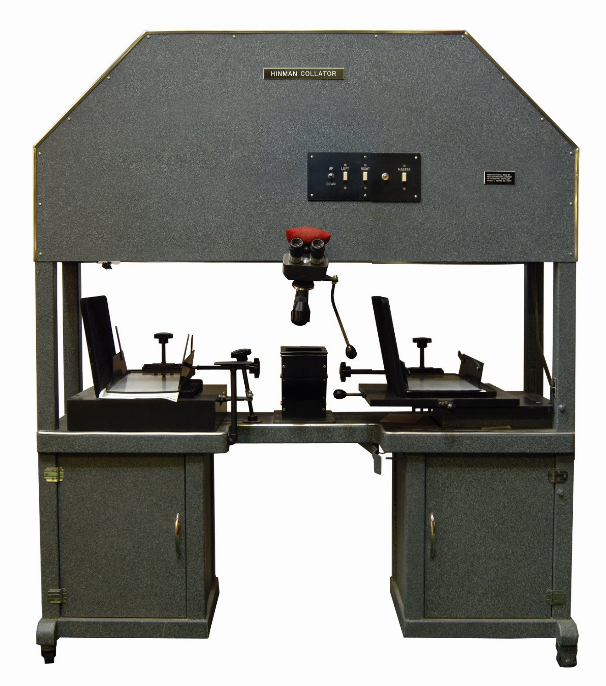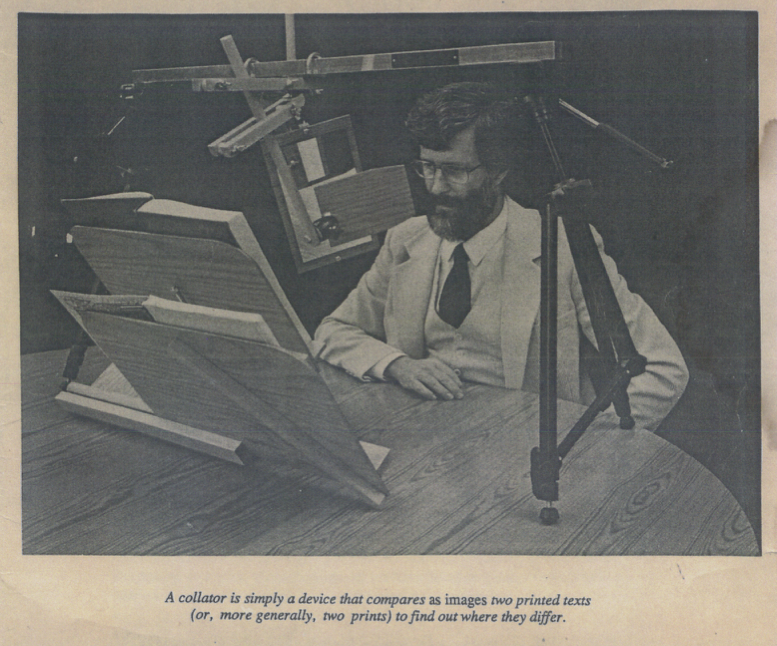Collating Vicentino’s «L’antica musica» (Rome 1555): New Digital Investigation Tools
In a study of textual criticism, the collation of sources is an operation of primary importance. It is a sophisticated process of comparing copies of the same text, looking for places where it differs. In early modern period, where corrections are common in printed books because the press could be stopped to make changes, each copy of an edition may contain variants which are potentially significant for the history of the definition process of a text and its support. Studies of analytical bibliography are marked by continuous efforts to make this investigation both easier and more accurate. Searching for new ways to make the visual comparison so that the differences on a page leap out to the eye, scholars tried to achieve the superimposition of images of the same text from supposedly identical sources like copies of the same edition. Two different approaches have been taken to obtain this issue: the development of methods of exploiting the optical potentialities offered by the human physiognomy; the development of devices and applications that, through the use of optical tools, allow to superimpose, compare and analyze different images of a text.
To collate all 78 copies known at that time of the first in-folio edition of Shakespeare’s works printed in 1623, the American scholar Charlton Hinman (1911–1977) used in the 1940s an optical collator of his invention. It was a large, bulky device which, using lights and mirrors, was able to superimpose into a central screen the images of two different copies of an edition. Another device, already used in astronomical research, had been previously employed for similar purposes: the blink comparator invented in 1904 by German physicist Carl Pulfrich (1858–1927), in collaboration with the Carl Zeiss company. More than a dozen such devices were used up to the 1980s in the more important research libraries of the United States of America and the United Kingdom (Smith 2002).

The spread of photocopying machines enabled the diffusion of new methodologies, such as the use of copies on transparencies (Fahy 1985). In the 1980s, to analyze the editorial production of the Venetian Aldo Manuzio (1449–1515), the Canadian scholar Randall McLeod thought to exploit the stereoscopy of human physiognomy to fuse two streams of visual data, one from each eye, into a single image in the brain. His stereoscopic collator is a transportable device for comparing texts employing mirrors and blinds through which each eye is trained on a different source. In the 1990s, the possibility of replacing the paper reproduction of a source with a digital reproduction displayed on a computer screen was successfully tested.

The development of ever more sophisticated devices and applications based on the optical character recognition technology (OCR) for processing digital images, marked a decisive turning point. For some years now, the bibliographical research features a new generation of tools, often developed – as in the case of the previous devices – within specific bibliographical and philological research projects, which are able to superimpose and compare digital reproductions of multiple copies of a text (May 2018). This is the case of the Traherne Digital Collator, an innovative collation system developed by the University of Oxford as working tool for the preparation of a critical edition of the works by the English poet and religious writer Thomas Traherne (1637ca.–1674). This online open access application combines several digital functionalities with the retention of the link to the physical text. It allows to compare digital reproductions of different copies of a text or stored digital images with a physical source filmed through a digital camera (Dutta, Chung, Zisserman 2019). For its properties we have chosen to adopt this innovative tool in our research project, to collect systematically all the copies known today of Nicola Vicentino’s L’antica musica ridotta alla moderna prattica (Rome 1555 and 1557).

The methodological approach carried out by the Swiss scholar Etienne Darbellay (University of Geneva) in analyzing and editing the music production of Italian composer Girolamo Frescobaldi (1583–1643), provided the basis for some pioneering projects in the field of digital musicology. These experiences led to Aruspix, an open access application developed by Laurent Pugin (RISM Digital Center, Berne) in an international partnership (University of Geneva, McGill University of Montreal and others) (Pugin 2006 and 2013). This software application combines the properties of a digital collator (specifically developed for printed music sources) with those of a platform for processing the collected information to create a dynamic critical edition. This application will be used to provide a digital collation of Nicola Vicentino’s printed music.
The results of the collation of Vicentino’s L’antica musica ridotta alla moderna prattica will be presented in summer 2021.
Reference Literature
Fredson Bowers, Bibliography and Textual Criticism, Oxford: Claredon Press, 1964.
Abhishek Dutta, Joon Son Chung, Andrew Zisserman, «Traherne Digital Collator», http://www.robots.ox.ac.uk/~vgg/software/traherne/ (Last Updated: February 2019. Accessed: February 2021).
Conor Fahy, «Introduzione alla bibliografia testuale», in: La Bibliofilia 82 (1980), 151–180.
Conor Fahy, «A New Technique for Collating Copies of the Same Edition», in: Bulletin of the Society for Italian Studies 17, 1984, pp. 20-24; translated in Italian in: La Bibliofilìa 87 (1985), 65–68.
Donald W. Krummel, Bibliographies: Their Aims and Methods, London, New York: Mansell, 1984.
Steven W. May, «Collecting Multiple Copies of Renaissance Texts», in: A Handbook of Editing Early Modern Texts, ed. Claire Loffman and Harriet Phillips, London: Routledge, 2018, 84–89.
The McLeod Portable Collator, s.l., s.d., 1988 – Digital reproduction: http://blogs.bodleian.ox.ac.uk/wp-content/uploads/sites/113/2010/09/mcleod_collator_guide.pdf
Laurent Pugin, «Going Digital: Finding the Right Path for Critical Music Editions», in: Mélanges en l’honneur d’Etienne Darbellay, ed. Brenno Boccadoro and George Starobinski, Bern: Peter Lang, 2013, pp. 247–266.
Laurent Pugin, «Aruspix: an Automatic Source-Comparison System», in: Music Analysis East and West, ed. Walter B. Hewlett and Eleanor Selfridge-Field (Computing in Musicology, 14), Cambridge (MA): MIT Press, 2006, 49-60.
Steven E. Smith, «’Armadillos of Invention’: A Census of Mechanical Collators», in: Studies in Bibliography 55 (2002), 133–170.
Aruspix – https://www.aruspix.net
Traherne Digital Collator – https://oxfordtraherne.org/traherne-digital-collator/
Comments
No comment posted about Collating Vicentino’s «L’antica musica» (Rome 1555): New Digital Investigation Tools